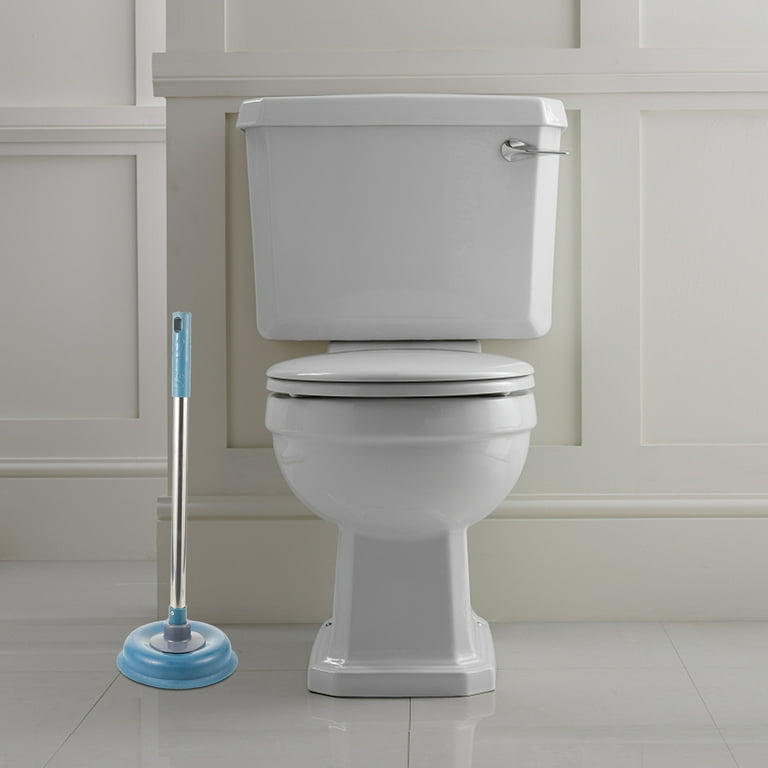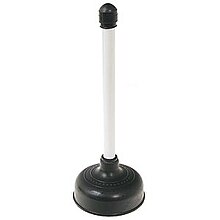Perfecting Plungers and Drain Cleaners: Crucial Strategies
Perfecting Plungers and Drain Cleaners: Crucial Strategies
Blog Article
How do you really feel when it comes to How to Unclog Your Sink with a Plunger?

Intro
Appropriate maintenance of house drains is essential for stopping clogs and making sure smooth water circulation. One of the key devices in every home owner's toolkit is the plunger, together with different drainpipe cleansers designed to tackle stubborn blockages successfully. This write-up discovers just how to make use of bettors and drainpipe cleansers properly to maintain your drains pipes streaming easily.
Section 1: Understanding Plungers
Types of Plungers
There are numerous sorts of bettors offered, each developed for different types of drains pipes and clogs. The most typical kinds consist of cup plungers, flange plungers, and accordion bettors.
Just How Plungers Job
Bettors work on the principle of producing pressure and suction to dislodge obstructions. When properly applied over a drain, they produce a vacuum cleaner that can take out particles or separate clogs.
Selecting the Right Bettor
Selecting the ideal plunger relies on the sort of drainpipe and the nature of the blockage. Cup plungers are perfect for sinks and bathtubs, while flange bettors are better fit for commodes due to their design.
Typical Errors with Bettors
Avoiding these mistakes makes sure efficient plunging: inappropriate seal around the drainpipe, not enough pressure, and unclear bordering particles.
Area 2: Utilizing Plungers Successfully
Prep work
Before plunging, guarantee the plunger covers the drainpipe entirely and develops a tight seal. Clear any noticeable particles around the drain opening.
Technique
Begin with gentle plunging activities to build suction. Boost stress gradually, making use of a steady rhythm. Repeat as required till the drainpipe clears.
Fixing Tips
If diving does not work, attempt readjusting the seal, applying petroleum jelly for a better seal, or using a different sort of plunger.
Section 3: Comprehending Drain Cleaners
Kinds Of Drain Cleaners
Drain pipes cleaners can be chemical or chemical. Chemical cleansers make use of strong chemicals to dissolve clogs, while enzymatic cleaners utilize all-natural enzymes to break down organic matter.
How Drain Cleansers Job
Chemical cleansers respond with obstructions to liquify them, while chemical cleansers break down natural products like hair and oil without damaging pipelines.
Safety and security Factors to consider
Constantly use handwear covers and eye security when utilizing chemical drain cleaners. Ensure adequate ventilation and comply with supplier instructions thoroughly.
Eco-Friendly Alternatives
Take into consideration using vinegar and baking soda or enzyme-based cleaners for environment-friendly choices that are much safer for pipes and the atmosphere.
Area 4: Using Drain Cleaning Company Efficiently
Application Strategies
Put chemical cleaners directly right into the drain opening. Permit them to work for the recommended time prior to flushing with warm water. Enzymatic cleaners need to rest over night.
Preventative measures
Stay clear of mixing different kinds of cleansers, as this can generate toxic fumes. Never make use of chemical cleaners in conjunction with a plunger, as splashing can happen.
Managing Persistent Obstructions
For relentless obstructions, take into consideration using a pipes serpent or calling a specialist plumber to stop damages to pipelines.
Final thought
To conclude, understanding how to make use of bettors and drain cleaners successfully is necessary for preserving healthy pipes systems. By selecting the right tools and strategies, home owners can take on minor blockages and avoid major pipes issues down the line.
4 DIY Ways to Unclog Drains
Wire Hanger
This age-old technique has been used by many an amateur plumber – to much success. Take any wire hanger, deconstruct its shape and leave a small hook shape on the end. Time to go fishing! Remove the shower or sink drain cover and snake the wire into the drain, wiggling and rotating it as you push it through. Dispose of the gunk that you remove and flush the drain with hot water. Rinse with a pan of boiling water for best results.
Plunger
Creating a suction in your drain can break up clogs caused by hair and soap residue build up. First, make sure you are using the correct type of plunger, one specifically for sinks or tubs. They are typically smaller than regular toilet plungers and often have a shallow suction cup. Regular plungers can work too but we’d recommend cleaning them first and finding a way to create better suction over the drain.
Baking Soda and Vinegar
This technique is a classic – and one of the most popular DIY drain unclog methods. Pour one cup of baking soda and one cup of vinegar down the drain and allow it to work its magic overnight. The next morning, flush the drain with boiling water. Repeat if necessary.
Drain Snake/Hair Clog Tool
If you know your clog is caused primary by hair, a drain snake/hair clog tool might be your best option. These tools can be purchased for under $10 at any hardware store and work well so long as the clog isn’t too deep in the drain.
https://www.callcatons.com/blog/four-diy-ways-to-unclog-drains/

Application Strategies
Put chemical cleaners directly right into the drain opening. Permit them to work for the recommended time prior to flushing with warm water. Enzymatic cleaners need to rest over night.
Preventative measures
Stay clear of mixing different kinds of cleansers, as this can generate toxic fumes. Never make use of chemical cleaners in conjunction with a plunger, as splashing can happen.
Managing Persistent Obstructions
For relentless obstructions, take into consideration using a pipes serpent or calling a specialist plumber to stop damages to pipelines.
Final thought
To conclude, understanding how to make use of bettors and drain cleaners successfully is necessary for preserving healthy pipes systems. By selecting the right tools and strategies, home owners can take on minor blockages and avoid major pipes issues down the line.
4 DIY Ways to Unclog Drains
Wire Hanger
This age-old technique has been used by many an amateur plumber – to much success. Take any wire hanger, deconstruct its shape and leave a small hook shape on the end. Time to go fishing! Remove the shower or sink drain cover and snake the wire into the drain, wiggling and rotating it as you push it through. Dispose of the gunk that you remove and flush the drain with hot water. Rinse with a pan of boiling water for best results.
Plunger
Creating a suction in your drain can break up clogs caused by hair and soap residue build up. First, make sure you are using the correct type of plunger, one specifically for sinks or tubs. They are typically smaller than regular toilet plungers and often have a shallow suction cup. Regular plungers can work too but we’d recommend cleaning them first and finding a way to create better suction over the drain.
Baking Soda and Vinegar
This technique is a classic – and one of the most popular DIY drain unclog methods. Pour one cup of baking soda and one cup of vinegar down the drain and allow it to work its magic overnight. The next morning, flush the drain with boiling water. Repeat if necessary.
Drain Snake/Hair Clog Tool
If you know your clog is caused primary by hair, a drain snake/hair clog tool might be your best option. These tools can be purchased for under $10 at any hardware store and work well so long as the clog isn’t too deep in the drain.
https://www.callcatons.com/blog/four-diy-ways-to-unclog-drains/

I came across that write up about How to Unclog Your Sink with a Plunger while looking around the web. Make sure you take a moment to promote this content if you appreciated it. Thanks so much for your time invested reading it.
Apply Now Report this page